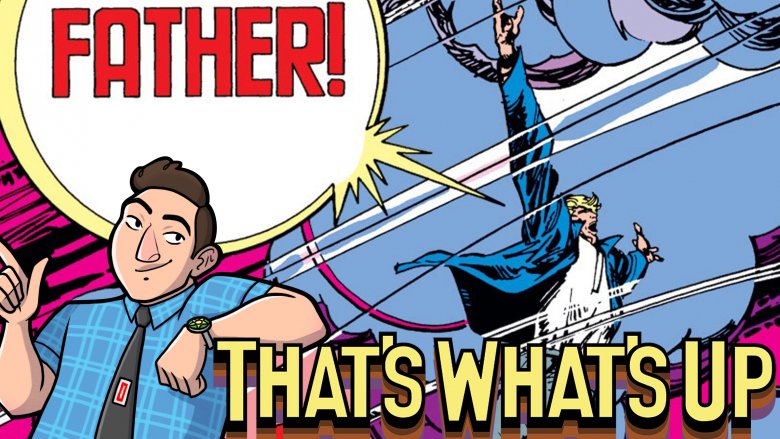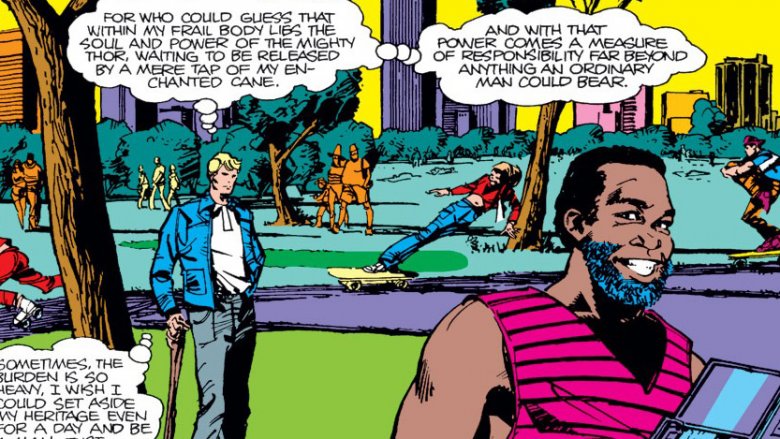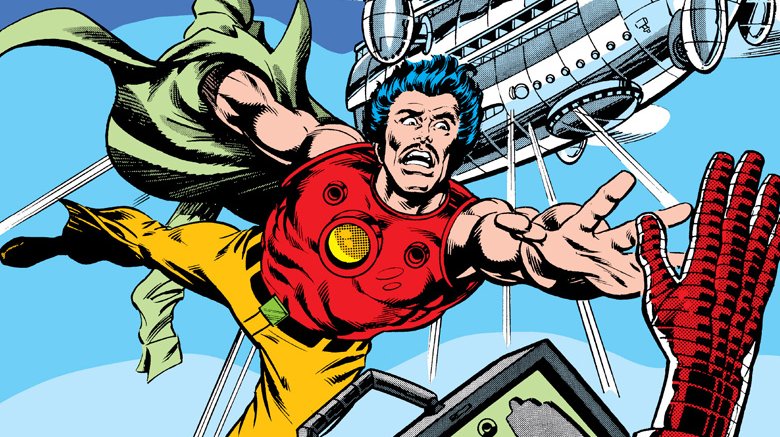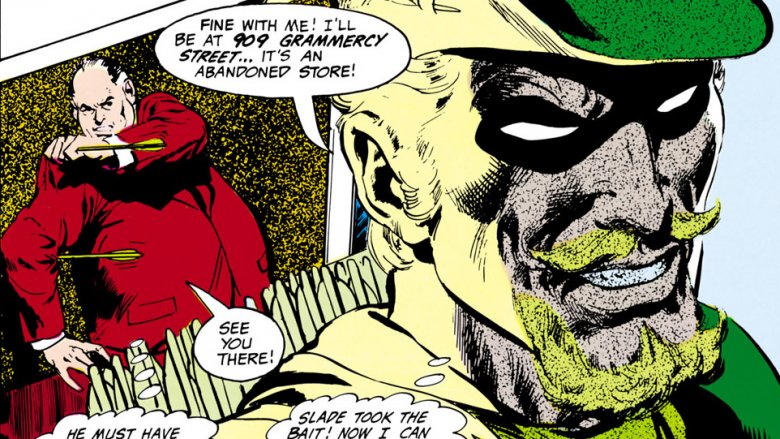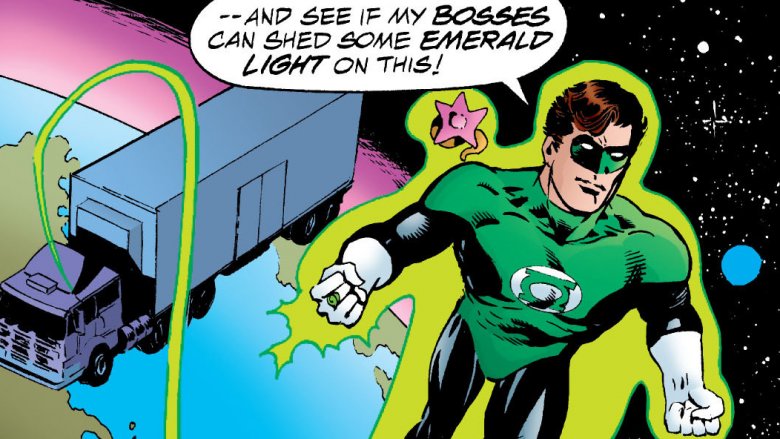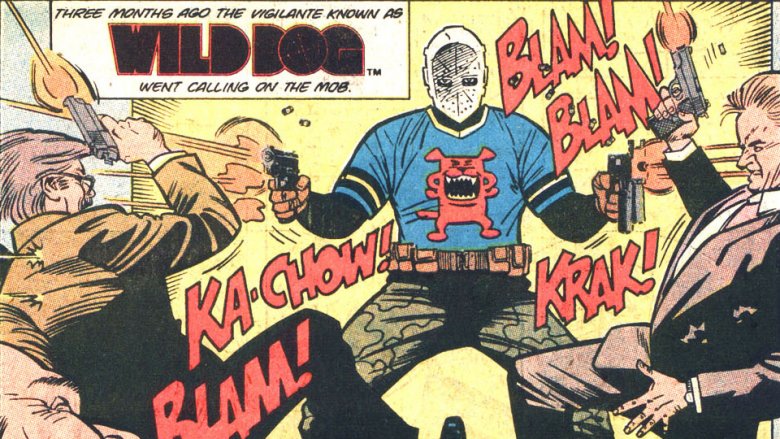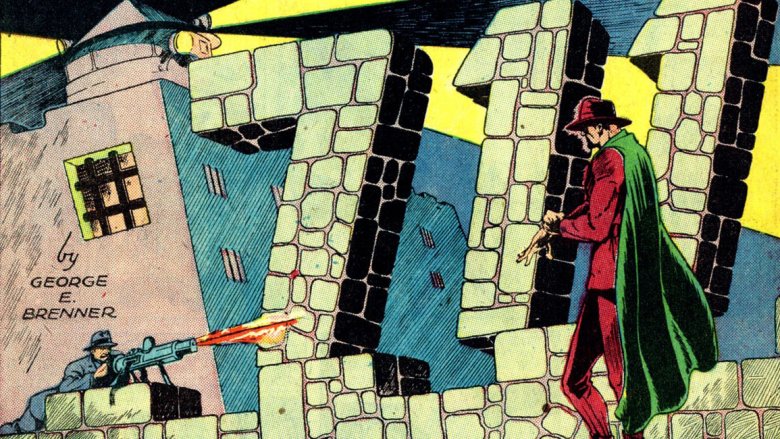That's What's Up: The Worst Superhero Secret Identities
Each week, comic book writer Chris Sims answers the burning questions you have about the world of comics and pop culture: what's up with that? If you'd like to ask Chris a question, please send it to @theisb on Twitter with the hashtag #WhatsUpChris, or email it to staff@looper.com with the subject line "That's What's Up."
Q: What's the most useless alter ego? It's Donald Blake, isn't it? — @puzzledpagan
Before we really dig into this, I want to say that I love the concept of secret identities. It's not something the superhero story invented — like so many pieces of the genre, you have Baroness Orczy and The Scarlet Pimpernel to thank for that — but from the moment Clark Kent took off his cape and put on a pair of glasses, it's been an inextricable element of superheroes. It's one of the things that can ground a character with fantastic powers and make them easy to relate to even when they're battling against killer robots or journeying to the depths of space.
Of course, that doesn't mean they're always necessary, and occasionally, they get downright weird and misguided. And yeah, you're right: the first one that springs to mind is definitely your boy Dr. Donald Blake, who used to be Thor and then turned out to not actually be anyone at all.
Dr. Don Blake
For most of the first wave of Marvel superheroes, secret identities helped to define not just who they were, but an entirely new kind of superhero, with civilian lives plagued with problems that went well beyond supervillains. Spider-Man was the one who perfected this idea, with Peter Parker having an endless series of troubles that ensured that he'd always be on the losing end of something even if he triumphed over his foes, and the Hulk put the idea of duality at the very core of the character. Even the heroes who didn't have traditional "secret identities," like the Fantastic Four — arguably the first characters to run with the idea of superheroes as worldwide celebrities — were built around what they did when they weren't battling evil. As the Thing, Ben Grimm couldn't have a secret identity, and the fact that he yearned for one made him one of the most compelling characters on the roster.
For a few of them, however, it seemed like they just had secret identities because that's something that most superheroes have, and nobody embodies that more than Don Blake. To be fair, there are a couple of interesting ideas at play there, including an update on the old Billy Batson/Captain Marvel dynamic, complete with a thunderclap, and you can't really understate how important it was for superhero comics to have a disabled character in a lead role that early, even if he's usually referred to in a pretty outdated form. The problem came in when it became clear that Thor was a) a completely different dude than Don Blake, and b) way more interesting.
Unlike a lot heroes who took their names from mythological figures, Thor was actually Thor. Like, the for real Norse God of Thunder, who lives in a magic world across a rainbow bridge where he fights Frost Giants and is doomed to die by snake murder in the Twilight of the Gods. That's something that's made abundantly clear early on, when Stan Lee and Jack Kirby started doing Tales of Asgard stories, which frequently featured stories about Thor growing up as a god.
Compared to all that, Don Blake just isn't that interesting, which is probably why, as early as 1968, he was revealed to be an identity created by Odin so Thor could be human for a little while, and then phased out entirely in the '80s. More like Don Fake, am I right? Boom.
Tony Stark
Speaking of characters for whom the secret identity feels like a weird vestigial trait that they should've evolved past, we have Iron Man. For him, though, the problem here isn't the identity. It's the secret.
The original idea was that while Tony Stark was pretty open with the public about having invented a ridiculously powerful suit of armor that was capable of laying waste to entire armies, he claimed he wasn't the one wearing it. Instead, that job was said to have gone to an anonymous employee who would serve as Tony's bodyguard — and to be fair, there actually were a lot of really good stories that came out of that premise over the years. Some of Tony's more questionable actions in the suit were blamed on "Iron Man" instead of Tony Stark, and at one point, he even killed off his fictional alter ego and replaced him with a new (and equally anonymous) pilot. It's a pretty neat trick to get out of, you know, literally taking any responsibility for your actions whatsoever, but it's not exactly the most heroic thing in the world. Also, if you were paying attention a second ago, you might've already figured out the critical flaw in this plan, which was dunked on pretty regularly even within the comics themselves: If Iron Man is Tony Stark's bodyguard, then why don't we see them together, like, all the time?
At the end of the day, Tony Stark had the opposite problem of Don Blake's. He's a cool exec with a heart of steel, and when you add the superheroic identity on top of that — especially when it is by definition built and maintained by his particular brand of genius — then the whole package is actually pretty interesting. Tony Stark as a well-known superhero technologist is way more interesting than the secret ever was, which is probably why the single most popular version of Iron Man that has ever existed in any medium tossed the secret identity bit out the window at the end of the first movie.
Oliver Queen
Let's be real with each other for a second here: the only reason that Green Arrow has a secret identity — the only reason Green Arrow has literally anything he has — is because Batman had one first.
I've written pretty frequently about how Superman's overwhelming popularity at the dawn of the Golden Age inspired countless imitators, but Batman wasn't exactly a slouch in that regard either. Believe it or not, it was actually Robin who was more commonly imitated. He redefined the concept of the sidekick, and it wasn't long before there was a whole legion of knockoffs. The thing is, in most cases, the other heroes just took the sidekick. Captain America and Bucky, for instance, are about as distinct from Batman and Robin as you can be while still being partnerships that contain a crime-fighting child in a domino mask, and more obscure characters like Nightmare and Sleepy are pretty different, too. Oh, side note: someone ask me about Nightmare and Sleepy sometime. That stuff is buck wild.
Anyway, Green Arrow had his own Robin, Speedy, right from his first appearance in 1941, but that wasn't the only piece of "inspiration" that Mort Weisinger and George Papp took from Batman. Over the years, Oliver Queen would lift virtually everything from the Caped Crusader, up to and including a giant catapult that would launch them across the city in times of dire need. Seriously: I'll give you the Arrowplane because that's a pun you'd be a fool not to use, but that dude had an Arrow Signal and an Arrow Cave. A cave! Arrows don't come from caves! You can't just get a cave and pretend that it's on theme!
Anyway, as for the secret identity, it's not just that he's lifting it from Batman, although having a much more famous character doing everything you're doing but better is a pretty tough gimmick. And, for the record, Bruce Wayne is a fantastic secret identity, especially in the '60s when he kept insisting that he and his youthful ward were just constantly going on fishing trips that lasted about 44 minutes. The problem is that he even bothers. See, in 1969, when Neal Adams redesigned him, Green Arrow started sporting what may in fact be the most distinct beard in comics history. It's a great look, don't get me wrong, but it's at the point where he could introduce himself by saying "Hi, I'm Oliver Queen and I'm definitely not Green Arrow" and then winking while actually saying the word "Wink!"
Hal Jordan
I've never had a particular connection to Hal Jordan as a character, but the appeal of his original secret identity isn't difficult to understand. He was, after all, created in 1959, at the dawn of the jet age, when "test pilot" was the coolest possible job. The thing is, once you have a magic space ring that can make anything you can imagine, and once you're using said ring to fight dudes with names like "Evil Star," the thrill and danger of the day job doesn't really have the same appeal. So why keep it at all, when "space cop" is already a much more appealing full-time career?
It gets weirder when you remember stories like Emerald Dawn II, where Hal's sentenced to 90 days in jail for drunk driving and has to use his ring to escape and go fight space crimes before returning to Earth every night to serve out his sentence. And then it gets even weirder when you remember that stretch of comics in the '70s, when Hal was fired from his job as a test pilot and had to hold down jobs like being a toy salesman or a truck driver. Being the only representative in an entire sector of the closest thing the galaxy has to a law enforcement organization is enough to deal with.
Wait, hang on. I just remembered that when he was a trucker and he got the call to go deal with space trouble, Hal Jordan would drag his 18-wheeler into space and then seal it up in a bubble in orbit until he got back. That actually rules, and may in fact be the single best thing that character has ever done.
Jack Wheeler
When you get right down to it, a secret identity is just another kind of gimmick, like a costume or a set of powers. In the case of Wild Dog, it was the gimmick, although it's honestly hard to figure out if it was the best thing about him or the most unnecessary.
If you don't know about Wild Dog, you should, because he's great. Created by Max Allan Collins and Terry Beatty, he was DC's answer to the Punisher: a lethal, gun-toting vigilante who operated outside the law. The thing is, everything about him was taken to a truly ridiculous extreme. If Frank Castle was built on the archetype of Mack Bolan, but reflected through the world of comic books, where someone can be a Very Serious Antihero while still running around wearing a giant white skull on his t-shirt, then Wild Dog was that same archetype reflected back through comics again. He was a vigilante for a world where talking telepathic gorillas occasionally attack cities, and where the best way to fight against evil is to drive around in a rocket car shaped like a bat. He doesn't have a skull on his chest, he has a Jason Voorhees-style hockey mask, a football jersey with a laughing cartoon dog on it, and a pair of camouflage cargo pants. And also a machine gun that he uses to literally murder people constantly because, as the house ads used to say, "everyone talks about terrorism. He does something about it." Oh, and all of this is happening in Iowa.
But apparently all that wasn't enough, so when he first hit the stands in a 1987 miniseries, there was one more gimmick thrown in for good measure: Wild Dog had a secret identity so secret that even the readers didn't know who he was. The setup was that there were four characters introduced who could potentially be Wild Dog, including a cop, a secret agent, a crusading reporter, and a mechanic with a vendetta. At the end of the series, it turned out to be the latter: Jack Wheeler, whose girlfriend had been killed by the mob.
The problem is that once that once that particular mystery was solved, there wasn't a whole lot distinguishing Wheeler from his Marvel counterpart, at least in terms of motivation. The fact that he had a secret identity at all made him a little unique, but it raised the question of why you'd bother, since the real fun was seeing him in deadly action against, say, a ruthless cabal of right-wing anti-pornography advocates. No joke, that happened in Action Comics. You know, the comic that also has Superman in it? That one.
Dan Dyce
We've covered plenty of different ways that secret identities can go bad, from questions of motivation to outright uselessness, but if you want to talk about a hero who really got the raw end of the secret identity deal, you have to go all the way back to the Golden Age for an obscure vigilante named 711.
His real name was Dan Dyce: a promising young attorney who just happened to look exactly like his good friend Jake Horn, a career criminal who was on the verge of being sent to jail for life. Horn, however, had a request of his identical pal: if Dyce claimed to be Horn and took the fall for the crimes, the real Horn could stay out of prison for a few days until his wife gave birth to their child. Once that was all taken care of and Horn had the chance to enjoy a day or two with his child, he'd confess, Dyce would get out of jail, and all would be well. Unfortunately, as soon as Dyce was locked up, Horn was hit by a car and died instantly, leaving Dyce to spend the rest of his life in prison. Weirdly enough, this was reported in the newspaper as Jake Horn being killed, without the reporter ever bothering to figure out what he was doing jaywalking while he was supposed to be in prison.
With me so far? Good, because this is where it gets complicated. Dyce, being the clever sort of person who becomes a Golden Age superhero, tunnels his way out of prison only to realize that, and I quote, "I'm forgotten by now — I'm no longer Dan Dyce, I'm #711 — and my place is back behind these walls!" But since he's always been on the side of justice, and since he now has an undetected network of tunnels running through the entire prison, Dyce decides that Prisoner #711 is going to fight the crimes committed by criminals who are already in prison!
The idea is that he'd hear a crook discussing an unsolved crime they'd pulled off before their conviction, or something they were planning with an associate on the outside, beat them up to get some more information, and then literally escape jail to stop it while wearing a fedora, a cape, and the prison uniform that had his number on it. Then, having done that, he'd just go back to prison and continue serving out a life sentence for a crime he did not commit. This is... maybe not the best use of his time and resources, to be quite honest. And since his secret identity requires him to, you know, spend the rest of his life behind bars, that's not great.
But at least it was short-lived. In what might be the most undignified exit I've ever seen for a superhero, 711 capped off his 15-issue run by being unceremoniously gunned down in the last installment of his strip, with the last panel promising to introduce a bold new hero named Destiny who would carry on his legacy. 711 dies facedown in the street, and Destiny's first solo story the next month ends with him cheerfully waving as 711 ascends into Heaven. No, really. Comics are very weird, and always have been.
Each week, comic book writer Chris Sims answers the burning questions you have about the world of comics and pop culture: what's up with that? If you'd like to ask Chris a question, please send it to @theisb on Twitter with the hashtag #WhatsUpChris, or email it to staff@looper.com with the subject line "That's What's Up."
